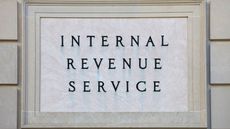Cash In on Your Home Equity
A home equity line of credit or loan can help you fund home renovations or refinance high-rate debt but consider other uses, too.


For the nearly two-thirds of Americans who own a home, tapping into home equity can be an affordable and flexible way to borrow money. Of the two main ways to access your home equity — a loan and a line of credit — a home equity line of credit (HELOC) is the more flexible because it lets you borrow and repay funds as you need them.
HELOCs and home equity loans are usually available at relatively low-interest rates because they are secured by your home — which also makes them riskier for you. If you have a good credit score (usually 740 or above), that will help you qualify for the lowest rates.
You can lock in the rate and the payments for a loan, but HELOCs usually have a variable rate — often tied to the prime rate — that rises or falls as the Federal Reserve changes short-term rates, and you typically have the option to pay only the interest on your debt for a number of years. To fight inflation, the Fed is expected to continue pushing up rates in 2023, although it may lower them if a recession takes hold.

Sign up for Kiplinger’s Free E-Newsletters
Profit and prosper with the best of expert advice on investing, taxes, retirement, personal finance and more - straight to your e-mail.
Profit and prosper with the best of expert advice - straight to your e-mail.
What Is a Home Equity Line of Credit (HELOC)?
A Home Equity Line of Credit (HELOC) allows homeowners to borrow from their home equity during the draw period — which typically lasts for up to 10 years. During the draw period, borrowers can often make interest-only payments. To drive the HELOC balance down, you may choose to pay the principal at any time or agree with the lender to make a minimum principal payment during the draw period, which is typically 1% to 2% of the HELOC balance.
Because a HELOC is a revolving line of credit, you can tap it whenever you need money — by using a check, a credit or debit card connected to the account, or using an electronic transfer. Note: Closing costs for a HELOC may run anywhere from 2% to 5% of the loan amount. But in some cases, lenders will waive the fees if you keep the credit line open for three years or more.
If you owe money on the HELOC at the end of the draw period, you enter a repayment period — typically up to 20 years — during which you pay principal and interest at prevailing rates. Payments are usually made monthly, amortized to retire the debt by the end of the repayment period. By the time the repayment period starts, many homeowners with a significant balance and sufficient equity choose to refinance their mortgage and add the home equity debt to the new mortgage.
How to use a HELOC
You can draw on your home equity for just about anything — to buy an investment property, to finance college expenses for your children or invest in your own business. But the most common (and often the most beneficial) uses of a home equity line of credit are home improvements and debt consolidation.
As short-term interest rates have risen over the past year, interest charges on credit cards have gone up. If you have a large balance on a high-interest credit card, using a HELOC to pay off that debt would likely save interest and lower your monthly payment. (A credit card balance transfer is another option for refinancing card debt.)
Using a HELOC to refinance debt could help you get your financial life back on track, but be sure that you understand the risks. If you struggle to control your spending — a common reason that people rack up credit card debt — or to keep up with debt payments, you could put your home on the line. Most HELOCs come with a “curtailment clause,” which allows lenders to cut off access to the line of credit if they detect a significant change in your financial situation or the value of your home.
Home improvements are a less-controversial reason to apply for a HELOC. A project that enhances your home’s value is one of the most common and arguably one of the best uses of the equity in your home, says Keith Gumbinger, vice president of financial publisher HSH. And if you itemize deductions on your tax return, the interest you pay on home equity that is used to buy, build or improve your primary residence or qualified second residence may be tax-deductible.
A HELOC can be a good source of bridge financing for people in or approaching retirement as well. For example, if you have a home remodel budget of $50,000, you might pay the up-front cost of the remodel using a HELOC and then direct money from IRA withdrawals to pay off the HELOC balance over the course of a few years. Or you could use HELOC funds as a way to avoid selling investments at a loss when the stock market is down, then repay the balance when your investments rebound.
But tread lightly when borrowing in retirement. “Tapping into a HELOC should not be thought of as an income stream to prop up or supplement your retirement. This should be a one-time withdrawal that you plan on paying back,” says Christopher Lyman, certified financial planner for Allied Financial Advisors in Newtown, Pa.
What is a home equity loan?
Unlike HELOCs, home equity loans provide a single lump-sum disbursement. Home equity loans and HELOCs offer similar interest rates at the outset. But home equity loans typically have a fixed rate.
Whether a line of credit or a loan better suits you depends on your timeline of financial need and your desire for a fixed or variable interest rate. Because you get your funds in a single disbursement with home equity loans, they serve a one-time credit need well, such as financing a single renovation project, buying a costly item or consolidating debt. If you’re concerned about rising rates in the future and your credit needs are suited to a one-time disbursement, then a home equity loan is likely the better option for you.
There is a workaround for homeowners who have already opened a HELOC but would rather have a fixed rate. “Many lenders allow you to open a home equity line of credit and then break off a piece of that line of credit into a fixed-rate, lump-sum repayment opportunity,” Gumbinger says. For example, a homeowner who sets up a line of credit for $25,000 and borrows $10,000 of it might break that balance off into a 10-year repayment period with a fixed rate.
Ultimately, tapping home equity makes more sense in some situations than others, and whether it’s the best tool can depend a lot on how high interest rates are or how strong the real estate market is. “Cautious use of your home equity is always a good idea, particularly right now when home values are less certain to continue increasing,” says Gumbinger.
Related articles

Emma Patch joined Kiplinger in 2020. She previously interned for Kiplinger's Retirement Report and before that, for a boutique investment firm in New York City. She served as editor-at-large and features editor for Middlebury College's student newspaper, The Campus. She specializes in travel, student debt and a number of other personal finance topics. Born in London, Emma grew up in Connecticut and now lives in Washington, D.C.
-
-
 IRS is Targeting Promoters of Abusive Tax Schemes Kiplinger Tax Letter
IRS is Targeting Promoters of Abusive Tax Schemes Kiplinger Tax LetterTax Letter Tax schemes range from basic tax dodges to highly complex transactions.
By Joy Taylor • Published
-
 How to Save on Prescription Medication
How to Save on Prescription MedicationHow you can save money on prescription medication amidst rising prices.
By Erin Bendig • Published

